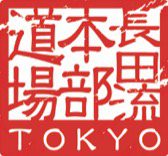If Japanese were easy, the whole world would be speaking it.
Tsuri (吊り) means suspension. With a prefix such as yoko (sideways, 横) or sakasa (inverted, 逆さ) the tsuri is pronounced as zuri; like yokozuri or sakasazuri respectively. In both cases the actual kanji for tsuri and zuri is one and the same; only the reading/pronunciation differs.
Repeat: there is no such thing as yoko tsuri or you-name-it-prefix tsuri. The pronunciation will always be zuri.
Suffice to say that the Japanese language is holding in store plenty more such “tricky” occasions and “pitfalls”. The following examples have been cherry picked with permission from “Japanese in 15 Seconds”.
Kashira (頭, head) but nawagashira (縄頭, the “head” of the folded rope in shibari; usually referred to as bight)
Shiri (尻, ass), but nawajiri (縄尻, the knotted ends of the rope in shibari)
Kuchi (口, entrance, mouth, pie hole), but deguchi (出口, exit)
Kusuri (薬, medicine), but nurigusuri (塗り薬, medical cream)
Ke(毛, hair), but matsuge(まつ毛, eyelash)
Ha(歯, teeth), but ireba(入れ歯, denture)
Hon(本, book), but sanbon(三本, three books)
Hon(本, book), but roppon(六本, six books)
Sara (皿, dish), but haizara (灰皿, ashtray)
Hi(日, day), but kinyoubi(金曜日, Friday)
Nifun(二分, two minutes), but sanpun(三分, three minutes)
Tsuri (suspension, 吊り), but yokozuri (横吊り, sideway suspension)
Hishi (菱, diamond), but nijubishi (二重菱, special hojojutsu term to mean either having a diamond/hishi pattern in the front as well as in the back or having smaller hishi inside a larger hishi)
Taisetsu (大切, precious), but daijoubu (大丈夫, all right)
Osada Steve
